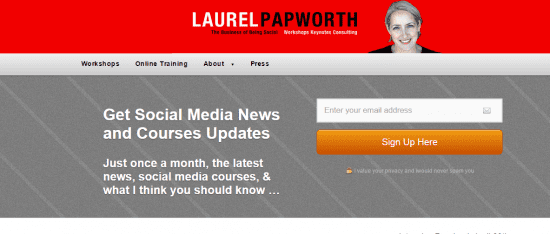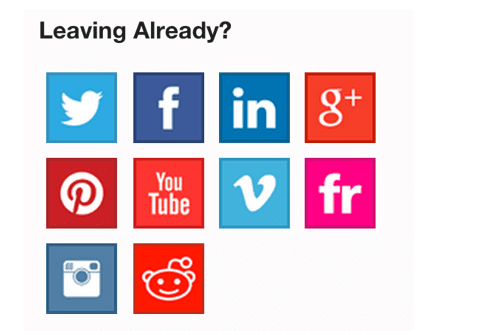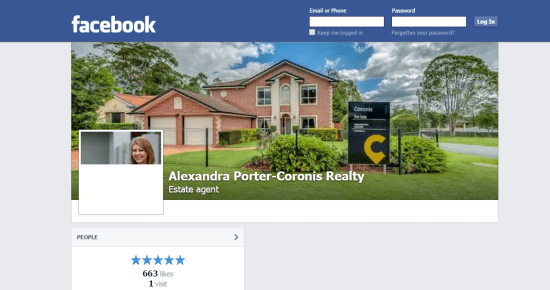Examples of using social media to promote your personal blog
Blogging without social media is now the digital equivalent of stranding yourself on a desert island. To promote yourself effectively and get the results you want, you need to find and connect with people who share similar interests and goals. The best social media strategy entices people to follow the link back to your main blog and check out your main content posted there.
Developing a personal brand using a blog together with social media has a slightly different approach depending on your niche and subject matter. Researching some basics about your target audience is an essential early step, and thankfully each of these social platforms has user-friendly search tools to help you. The essentials to note are average age groups and interests among the followers you want to target as potential blog readers.
Starting up a Personal Blog
The definition of 'personal' has become rather broad for a blog because it can be anything from a personal online journal about your life to a blog about a specific subject that carries a great deal of meaning for you. Don't rush the process of fleshing out your blog topic. It should strike a good balance between what appeals to your target audience and what you also find meaningful.
Should you use your name?
Some experts recommend using your first and last name as your blog name, though you should follow this advice based on a few specifics. Consider your short list of subject matter possibilities, and think about how much certain individuals may find your topics controversial or otherwise counter to their cherished beliefs. This factor often comes into play if future employers may look up your name online. If your blog theme is very mainstream and common, it's usually just fine to use your first and last name. In this case, it can be more challenging to follow the first cardinal rule of blogging. If you want to blog about a topic that may well shake some people up, it's often best to use a pseudonym or a combination of your first name and a key word that tells people right away about your topic.
Case studies on personal blogs
Here are some examples of personal branding across a variety of marketing channels.

No better way to brand yourself then by inserting a headshot of yourself in the header of your website. That way, people looking for you by name can confirm that’ve come to the right place. More than that, people who didn’t have a face to match to the name can now do so.
You can’t go past this custom social media link square. It invites the user to continue the journey with the author off-site and in the social sphere.


As you can see in Alexandra’s timeline and display picture, she has made it obvious that she sells houses, and that she enjoys her job. Their confident Facebook page informs fans of their success in selling houses and in some cases, within days.

The first cardinal rule I've discovered about Blogging is don't be boring. The Internet is an enormous source of user-generated content, and it has become a very competitive arena for readers' and social followers' lasting interest. To cut through the masses, you need to stand out in people's minds and give them reasons to follow your blog. This cardinal rule applies to your social media posts as well.
I hate to be the bearer of bad news, but unless you're a celebrity or other public figure, few people are going to care about the details of your personal day-to-day life. The exceptions are usually your family and closest friends. It is good to sometimes throw in a short anecdote from your personal life if it ties directly into your core subject matter, but keep those minimal and relevant.
If you want to reach a larger and dedicated audience, a niche topic that matters to you is best for a blog. Be sure it's a topic you won't get bored with, because you'll always need to write new posts and create other types of content surrounding it. There are some reasons why your small business blog is failing as Jakk Ogden highlights in his blog.
Promoting yourself with Facebook
Once your blog is published with a good number of posts, it's time to set up a Facebook page for it. The specific number of posts you should publish before promoting your blog is usually a matter of opinion, but 15-20 published posts is a good goal. As a professional, a Facebook page allows you to post links to each of your blog posts, along with relevant photos, videos and related news items on other sites.
Facebook posts with photos and a link back to one of your posts tend to get more views than links without a photo. Last year, according to research from eMarketer, content posted with photos accounted for 75% of content and photo posts received the highest engagement on Facebook.
Once your Facebook page is live, find and like other pages on similar topics. Also invite your existing Facebook friends to like your new page. Using Video also increases engagement.
Using Twitter for driving blog traffic
Many bloggers have had great success with growing the biggest following in the shortest amount of time with Twitter. The microblogging site has a huge user base from every niche area imaginable, and new members join on a frequent basis. The basic rules for Twitter success are as follows:
Be sure to tweet links to your new posts as soon as you publish them. Also keep your Twitter followers updated on future topics and content you're working on for your blog. If anyone tweets you good feedback, always take the time to reply and thank them.
For more advanced Tweeters, read SmartInsights hub on Twitter Marketing.
Building Circles with Google+
Google+ is a relatively new addition to the most popular set of social media platforms, but it's already gained a solid user base. It provides a great platform for connecting with people who have the same interests and who could turn into loyal blog readers. Google+ gives you the option to join public or private discussions about relevant niche topics, and these are excellent ways for you to weigh in on the same topics covered in your recent blog posts. As example you can check out this case study to learn how H&M uses Google+ to engage their audience through an inspirational strategy, sharing a mix of media including photos and videos to promote fashion
Making the Tumblr connection
Many blogging platforms have available add-ins that allow you to automatically cross-publish each of your blog posts to a Tumblr blog, which is a great way to increase your main site's visibility. You have the option to publish the full texts of your posts to your Tumblr blog, or to publish only excerpts with a link back to the full text.
Tumblr is a very visual-heavy site, so adding images and animated GIF files is highly recommended. As with other social sites, following, commenting and reblogging are all the most effective ways to build an audience over time with Tumblr.
Find out if your profiles fits the growing Tumblr audience.
Managing multiple social sites can be a challenge, but you do have some tools at your disposal to help you. Applications such as Buffer and Hootsuite allow you to write and schedule posts to Facebook, Twitter and Google+ in advance, which can be a life-saver when you're juggling a blog with a busy schedule. Don't completely set it and forget it with the social scheduling. A mix of scheduled and real-time posting works the best, and for either case make sure your social posts are engaging.
Although it takes more time and planning, mix up the content you post to each of your blogs social accounts to keep things interesting. Seeing the same image and link on three different accounts will cause some of your readers to get bored after a while, and they'll be less inclined to read your newest content. At least once or twice a week, create a different post or tweet for each of your social accounts. You don't even need to add your blog link to all of them. Add something new to each of them that your readers wouldn't have learned just from reading your blog.
Social media's core idea is to create online communities around a specific niche, so interaction is also vital. Make some time to reply, share, retweet and comment on some of your followers posts as well. This step is essential for building trust and sending the message that you're not just out to get page views and traffic to your blog.
Branding yourself with a personal blog and social media takes some time, thought and planning. It also requires commitment, patience and dedication to building up a substantial following. Becoming a blogger people want to follow takes a certain level of chutzpah because you need to stick out from the massive online crowd. Doing so involves creating material that grabs others' attention, and not everyone is going to share your exact point of view. Don't let the possibility of less-than-polite feedback discourage you, and don't waste your mental energy worrying what others think. This approach will come through in the content you create, and it will help you gain the admiration of your social followers.
Facebook, Twitter, Google+ and Tumblr are the most established and recommended sites to join for promoting your blog. New social media sites are also launched on a frequent basis, and those are usually worth investigating to see if they're worth adding to your blog promotion strategy. Don't expect immediate results overnight when it comes to building a substantial following, and take note of which types of posts and tweets get the most attention from your followers. As trends change in your niche topic area, use these changes to make adjustments to your blog and social content as well.
 Thanks to Sarah Smith for sharing her advice and opinions in this post. Sarah is part of the marketing crew at REAA and an avid painter, traveller and reader. Sarah’s blogging activity has seen her pair up with all sorts of products that required the human touch to reach out to potential consumers in the blogosphere. You can follow her on Twitter or connect on Google+.
Thanks to Sarah Smith for sharing her advice and opinions in this post. Sarah is part of the marketing crew at REAA and an avid painter, traveller and reader. Sarah’s blogging activity has seen her pair up with all sorts of products that required the human touch to reach out to potential consumers in the blogosphere. You can follow her on Twitter or connect on Google+.






 Thanks to Sarah Smith for sharing her advice and opinions in this post. Sarah is part of the marketing crew at
Thanks to Sarah Smith for sharing her advice and opinions in this post. Sarah is part of the marketing crew at 


